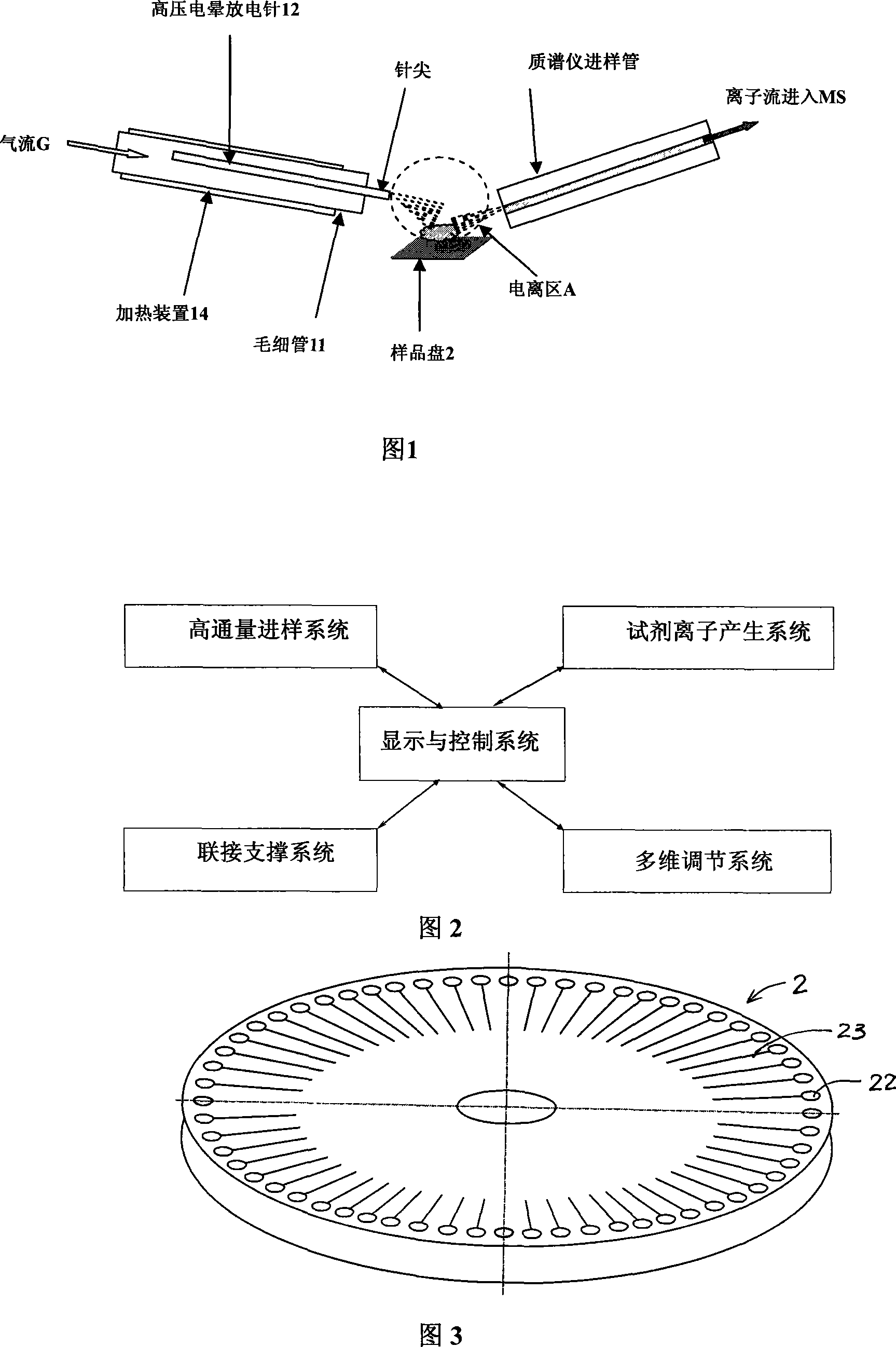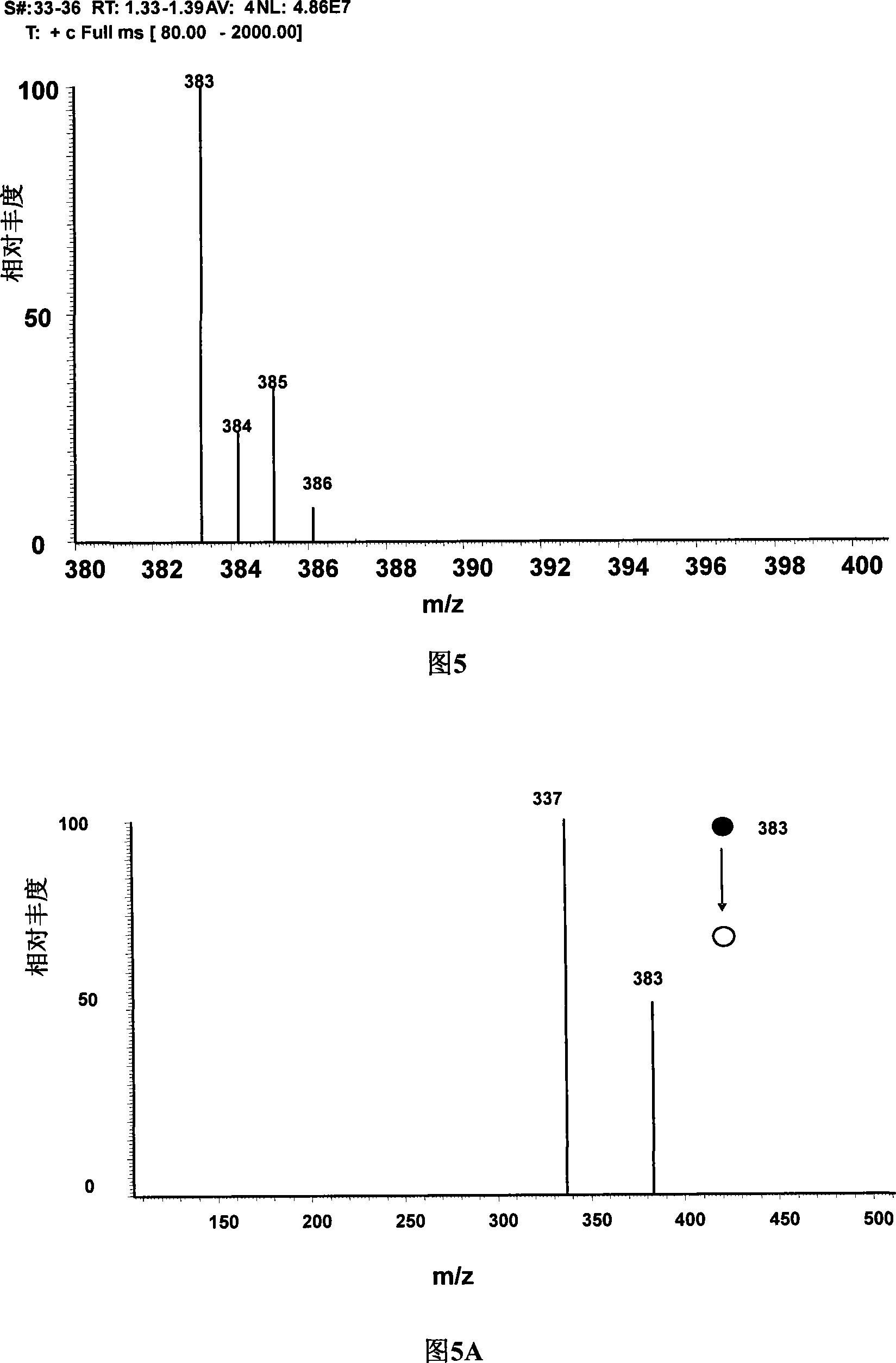Surface desorption atmospheric chemical ionization source and method for analyzing surface desorption atmospheric chemical ionization mass spectrum
A chemical ionization source and chemical ionization technology, applied in the field of analytical chemistry, can solve problems such as low sensitivity, no atmospheric pressure chemical ionization source, heavy high-pressure cylinder nitrogen, etc., and achieve the effect of improving sensitivity
- Summary
- Abstract
- Description
- Claims
- Application Information
AI Technical Summary
Problems solved by technology
Method used
Image
Examples
example 1
[0081] Example 1: Determination of active ingredient Loratadine (Loratadine, FW 382) in Claritin® tablet under positive ion mode
[0082] The ion source of the present invention was coupled to the LTQ mass spectrometer. During the experiment, the detection sample Claritin(R) tablet is placed on the sample disk, the angle between the ion source nozzle and the sample disk is adjusted to be 45-80°, and the angle between the inlet capillary on the mass spectrometer and the sample disk is 5-10°. The distance from the nozzle to the inlet capillary of the mass spectrometer is 50 mm, and the parameters of the LTQ mass spectrometer are adjusted well. The chemical ionization reagent is water vapor (water content is 45-60%, nitrogen is used as carrier gas), the pressure is 20psi, and the discharge electrode is added with a high voltage of 3-6KV to detect the sample. The results are shown in Figure 5. Figure 5 shows that the active ingredient loratadine (FW382) in the tablet is very stro...
example 2
[0089] Example 2. Negative ion detection mode
[0090] SDAPCI can also work in the negative ion mode, so that some components in the complex matrix can be transformed into negative ions for mass spectrometry analysis. During the experiment, TNT (MW 227) was selected as the representative of the ionization source parameters in the table below, and the TNT (10pg / cm 2 ) detection capability. Adjust the parameters during detection as follows:
[0091] quality range
[0092] The results are shown in Figure 9, which shows: in the negative ion mode, the spectrum of TNT primary mass spectrometry clearly shows the negative ion peak m / z 226 after deprotonation, and a small amount of free radical negative ion (m / z 227) is obtained at the same time . The MS / MS results of m / z226 and 227 (see Figure 9A and Figure 9B) show that m / z 226 mainly loses NO to obtain fragment m / z 196, and can also directly lose NO2 to obtain fragment m / z 180. Among these fragment ions, all ions are l...
example 3
[0093] Example 3. Analysis of free radical cations
[0094] In SDAPCI, operations such as replacement of reagents and addition of samples can be easily performed due to the operation under normal pressure. Therefore, for different experimental purposes, the reagents can be easily replaced, so as to better detect the analyte in complex collective samples. Experiments show that if the air is replaced by argon, SDAPCI-MS detection can also be performed. When argon does not contain active reagents such as water molecules, a considerable abundance of free radical cations can also be obtained.
[0095]In the experiment, a paracetamol sample was used to obtain a corresponding mass spectrum in an argon atmosphere (as shown in FIG. 10 ). Paracetamol is the predominant free radical cation (m / z 151). Due to their high energy, free radical cations are very active and can be rapidly broken down into smaller fragments. Therefore, in the MS spectrum, in addition to the base peak m / z 151,...
PUM
 Login to View More
Login to View More Abstract
Description
Claims
Application Information
 Login to View More
Login to View More - R&D
- Intellectual Property
- Life Sciences
- Materials
- Tech Scout
- Unparalleled Data Quality
- Higher Quality Content
- 60% Fewer Hallucinations
Browse by: Latest US Patents, China's latest patents, Technical Efficacy Thesaurus, Application Domain, Technology Topic, Popular Technical Reports.
© 2025 PatSnap. All rights reserved.Legal|Privacy policy|Modern Slavery Act Transparency Statement|Sitemap|About US| Contact US: help@patsnap.com



